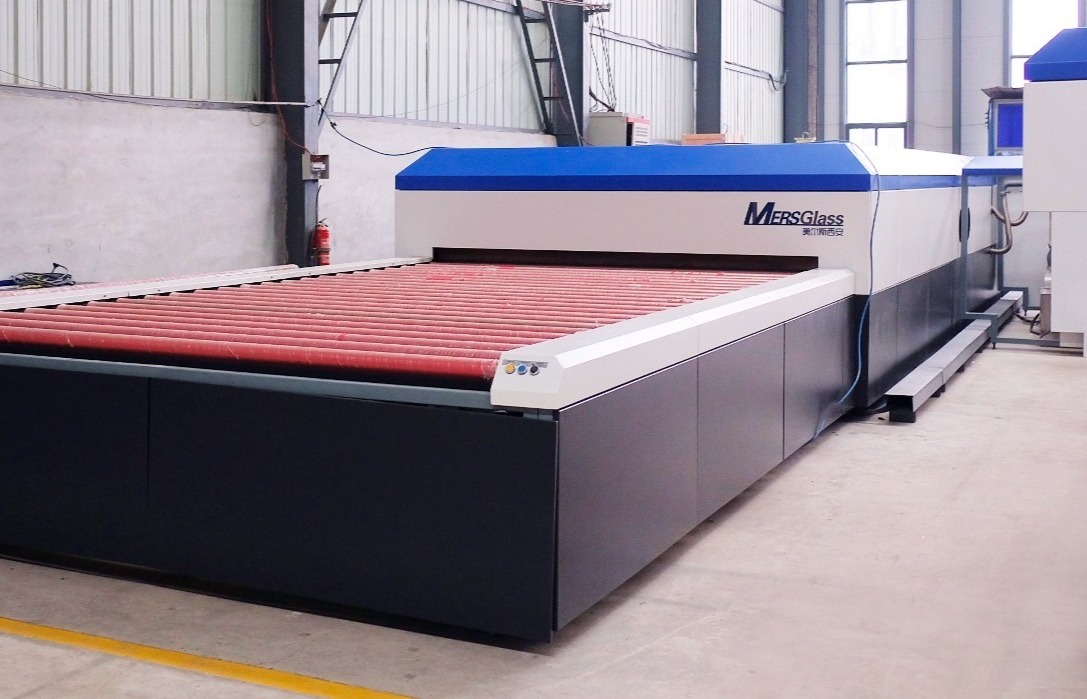
,文章长度在1000字左右
# Glass Laminate Machine for High-Quality Production
## Introduction to Glass Laminate Machines
Glass laminate machines are essential equipment in the modern glass manufacturing industry. These machines are designed to produce high-quality laminated glass, which is widely used in automotive, architectural, and security applications. The process involves bonding two or more layers of glass with an interlayer, typically made of polyvinyl butyral (PVB) or ethylene-vinyl acetate (EVA), under heat and pressure.
The demand for laminated glass has been steadily increasing due to its superior safety features, sound insulation properties, and UV protection capabilities. As a result, glass laminate machines have become more advanced to meet the growing market requirements for efficiency and quality.
## Key Components of a Glass Laminate Machine
A typical glass laminate machine consists of several critical components that work together to ensure optimal performance:
– Loading System: This section is responsible for properly positioning the glass and interlayer materials before the lamination process begins.
– Heating Chamber: The heart of the machine where the glass and interlayer are subjected to controlled heat to initiate the bonding process.
– Pressing System: Applies uniform pressure to eliminate air bubbles and ensure complete adhesion between layers.
– Cooling Zone: Gradually reduces the temperature of the laminated glass to prevent thermal stress and ensure product stability.
– Unloading System: Safely removes the finished product from the machine for further processing or packaging.
## Advantages of Modern Glass Laminate Machines
Today’s advanced glass laminate machines offer numerous benefits for manufacturers:
– Increased Production Efficiency: Modern machines can process multiple glass panels simultaneously, significantly boosting output.
Keyword: glass laminate machine
– Improved Product Quality: Precise temperature and pressure control result in consistently high-quality laminated glass with minimal defects.
– Energy Efficiency: Newer models incorporate energy-saving technologies that reduce operational costs.
– Automation Features: Many machines now include automated loading and unloading systems, reducing labor requirements.
– Customization Options: Flexible configurations allow for processing various glass thicknesses and sizes.
## Applications of Laminated Glass Produced by These Machines
The laminated glass produced by these machines finds applications in numerous industries:
### Architectural Applications
– Safety windows for high-rise buildings
– Soundproof glass for offices and residential buildings
– UV-protective glass for museums and art galleries
– Security glass for banks and government buildings
### Automotive Industry
– Windshields for all types of vehicles
– Side and rear windows with enhanced safety features
– Sunroofs with UV protection
### Specialty Applications
– Bullet-resistant glass for security purposes
– Hurricane-resistant glass for coastal areas
– Decorative glass with embedded designs
## Choosing the Right Glass Laminate Machine
When selecting a glass laminate machine for your production needs, consider the following factors:
– Production Capacity: Determine your required output to select a machine with appropriate throughput.
– Glass Size and Thickness: Ensure the machine can handle your specific product dimensions.
– Automation Level: Decide how much manual operation versus automation you require.
– Energy Consumption: Consider long-term operational costs related to energy usage.
– Maintenance Requirements: Evaluate the ease of maintenance and availability of spare parts.
– Manufacturer Reputation: Choose a reputable supplier with good after-sales support.
## Maintenance and Care for Optimal Performance
Proper maintenance is crucial for ensuring the longevity and consistent performance of your glass laminate machine:
– Regular Cleaning: Keep all components free from dust and debris to prevent contamination.
– Lubrication: Follow the manufacturer’s schedule for lubricating moving parts.
– Inspection: Conduct routine checks on heating elements, pressure systems, and conveyor belts.
– Calibration: Periodically verify and adjust temperature and pressure settings.
– Staff Training: Ensure operators are properly trained in both operation and basic maintenance procedures.
## Future Trends in Glass Lamination Technology
The glass lamination industry continues to evolve with several emerging trends:
– Smart Glass Integration: Machines capable of processing electrochromic or photochromic glass for smart window applications.